Field Notes: sensing ecologies in Finland
Published 9 October 2018 by Erich Berger
From September 16-23, 30 artists, scientists, biohackers and ecologists explored the isolated region around the Kilpisjärvi Biological Station in northern Lapland for the 4th Field Notes summer camp.
Correspondence, Erich Berger, Bioart Society + EOS participants (words and photos)
Field Notes – Ecology of Senses is an art&science field laboratory at the Kilpisjärvi Biological Station in Lapland, Finland, organized every other year by the Bioart Society. Five groups worked over the course of one week in sub-Arctic Lapland to develop, test and evaluate specific interdisciplinary approaches related to the idea of “ecology of senses”. The previous edition of Field Notes, Hybrid Matters (also covered by Makery) examined how our environment is converging with technology and explored the term “hybrid ecologies” as a thought vehicle to talk about how human activity is intentionally and unintentionally transforming our planet.
This year, Ecology of Senses investigated the role of our senses in extending this convergence—how we make sense of the world, how worlds are created through our senses, and how they affect they way in which we perceive ourselves. We used technology to considerably expand our original sensorium, but the sensory spectrum is much broader—it includes not only our own human corporal senses, but also animal- and bio-sensors that we have learned to appropriate, chemical and electronic sensors, as well as the future prospect of a fully quantified computational planet with its first implementations of orbit-tracked, networked bird swarms or fully wired forests, which are already being tested.
Our excitement for these technological sensing possibilities, with their allegedly reliable production of objectivity, has led us to give less value to the human senses or phenomena and environmental indicators around us, which are considered to be subjective. During Ecology of Senses, we explored this gap. Our aim was to engage with the inner and outer landscapes, create field experiments, find and establish test sites, set up observatories and excavations. We breathed, smelled, tasted, touched, listened and walked with open eyes, while installing sensors that we brought along with us or built on site.
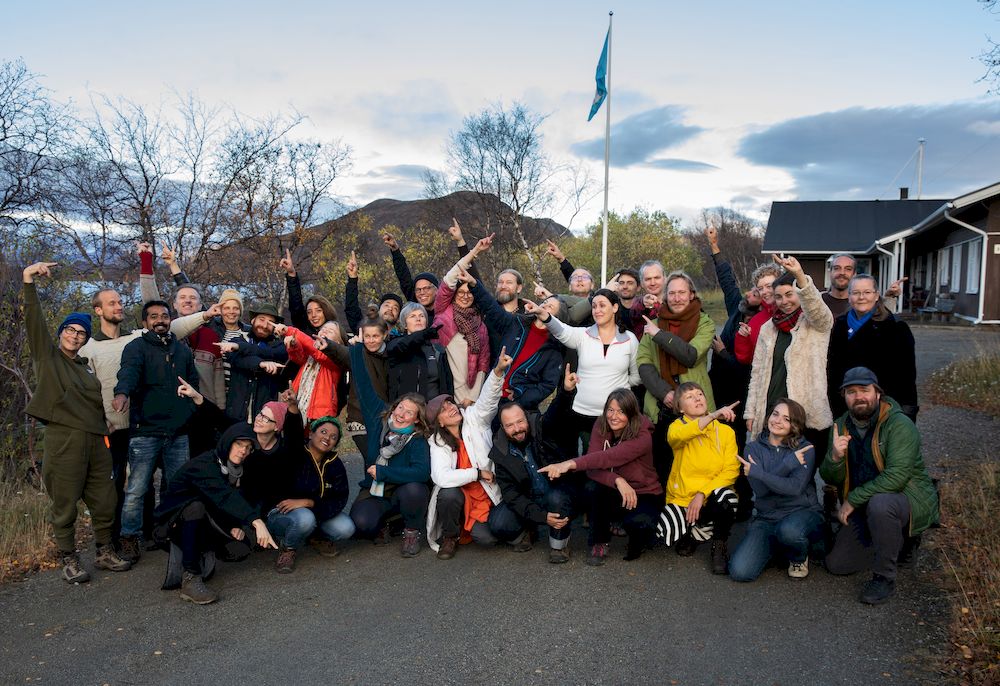
Reciprocal Sensing (insensible sensibilities)
How does a rock sense? The Reciprocal Sensing group led by artist Kira O’Reilly started from the idea that the environments in which we find ourselves are inherently communicative, that the notional bodies we define, with their provisionally sensory extensions, are just as receptive as they are communicative.
The group’s collaborative approach was loose—the looseness of the carrier bag described by science-fiction writer Ursula K. Le Guin, which is holding and containing, but also soft and adaptable to the movement of its contents, so that they can form, undo and reform connections, partial and otherwise. At the beginning of the week, the group decided to hack one another’s approaches, in order to enable increasing complexity in sensory experiments. One particularly poetic hack was Avner Peled’s addition of one of his soft robotic prosthetics to a sauna whisk that he wore on his head as a sensing apparatus.
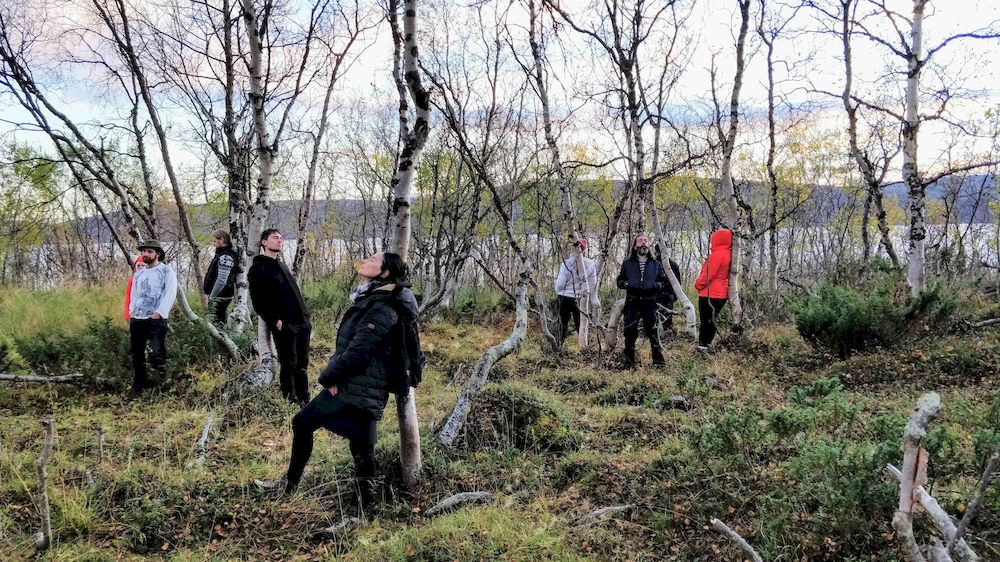

HUMUS.Sapiens, unveiling Hidden Micro Ecologies
“Let’s go underground!” As explained by Marc Dusseiller, the HUMUS.Sapiens group set off to explore various approaches to sense the hidden and dark places which lie below our feet. The complex networks of microscopic organisms that co-exist with us in the dark soils underneath the plant cover are fundamental in sustaining life for creatures above ground, as well as the whole planet’s atmosphere. The group’s aim was to create a shared sensitivity of soil and the processes in soils. While the landscape around Kilpisjärvi might look monotonous from afar, getting closer to it and digging into the ground itself might unveil another level of diversity and myriad activities, insensible to us humans, on an ultra micro-localized scale. How does this microscopic underground ecosystem reveal itself on the macro-landscape? What are the processes that form and inform the soil? How can we formulate a human-soil relationship?
HUMUS.Sapiens operates in DIWO (do-it-with-others) mode, involving group dynamics and shared skillsets in shaping these explorations, in addition to including our newly found microbial partners in their investigations. HUMUS.Sapiens built upon recent soil explorations by the Hackteria network, deploying a variety of open source tools to explore the world below us, including DIY microscopes, basic electronic sensors, mobile field-laboratories and performative scientific instruments.


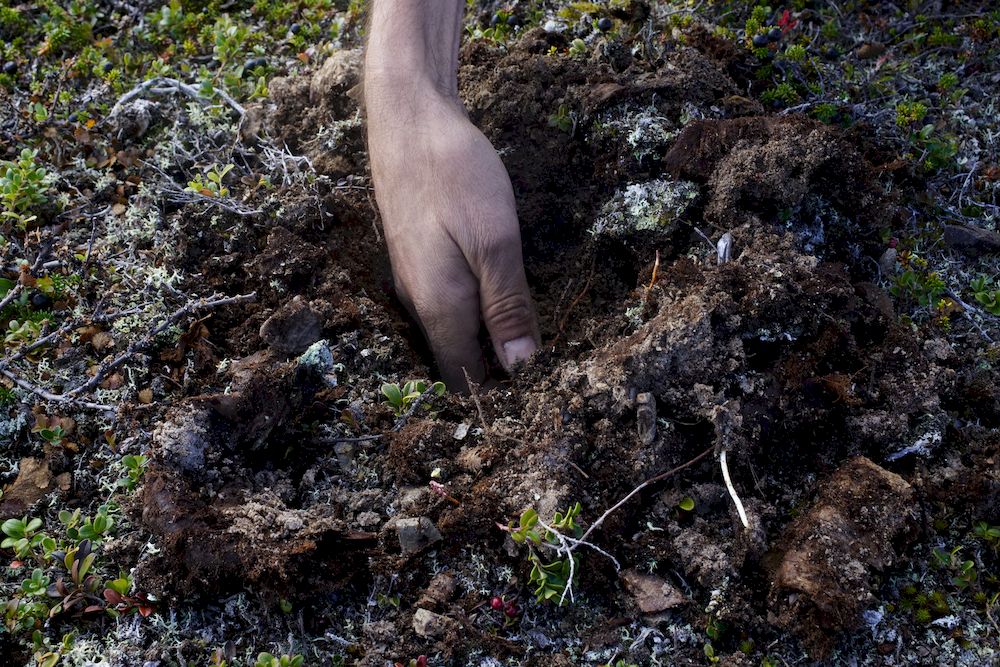
Surfing the Semiosphere
As herders, gatherers, artists and scientists, the group came together in Kilpisjärvi with archeologist and anthropologist Judith van der Elst to experience, explore and inventory carriers of significance in often radically different and subjective worlds within the larger electric and magnetic fields in which we are all “suspended”.
The group’s premise was the idea that all organisms perceive and react to certain sensory data as signs, carriers of significance picked up in their own perceivable surroundings or Umwelt. This concept was introduced by Jakob von Uexküll during the early 20th century, and combined with Charles Sanders Peirce’s theory of semiosis, it became the foundation for the current field of biosemiotics. The semiosphere is then the sphere in which sign processes operate within the set of all interconnected Umwelten. Shifting focus from the individual organism to the semiotic relationship as the core element of life, the group began their exploration by following the master: Lichen. In pursuit of Enlichenment, the group coalesced during the week into a collective “I”, in order to experience transcendent moments or interfaces that expanded our semiosphere and intersubjective knowledge.
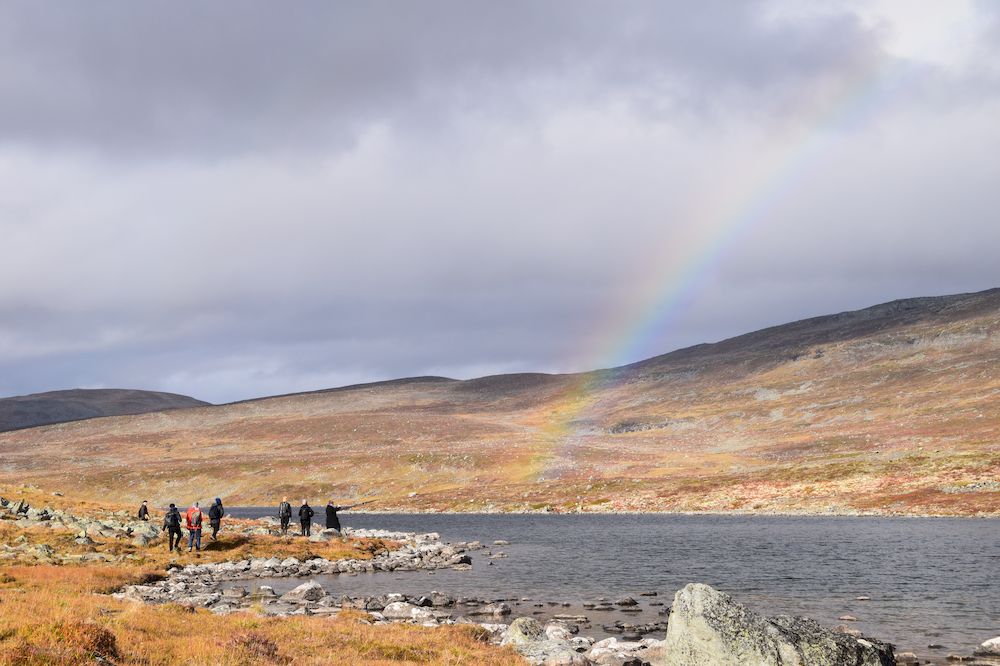
Augury: Machines which look at birds
Guided by artist Martin Howse, this group started off with the notion that all sensing is divination, the reading and creation of signs and unseen connections. For example, putting into a working circuit the internal and outward-facing senses of animals, birds, plants, lichens and minerals; reading and making use of their respective knowledge. For example, the group reads signs from the residues of salt crystal evaporation, and we can divine our own movements by patiently observing the directions of slow lichen growth. These might be connected to future weather patterns.
Augury means watching the birds and interpreting omens from their movements. We now watch birds from satellites and divine their flights via telemetry. This tells us something about climate change. As they worked in the field, incubating new dreams at the intersection of ancient geologic fault lines, they discovered together that augury is not always about accommodating the senses of others to suit ourselves. Rather, it is to become sensitive and sensitized to all signs, like a silver photographic plate, the unmoving surface of a lake; we become screens.
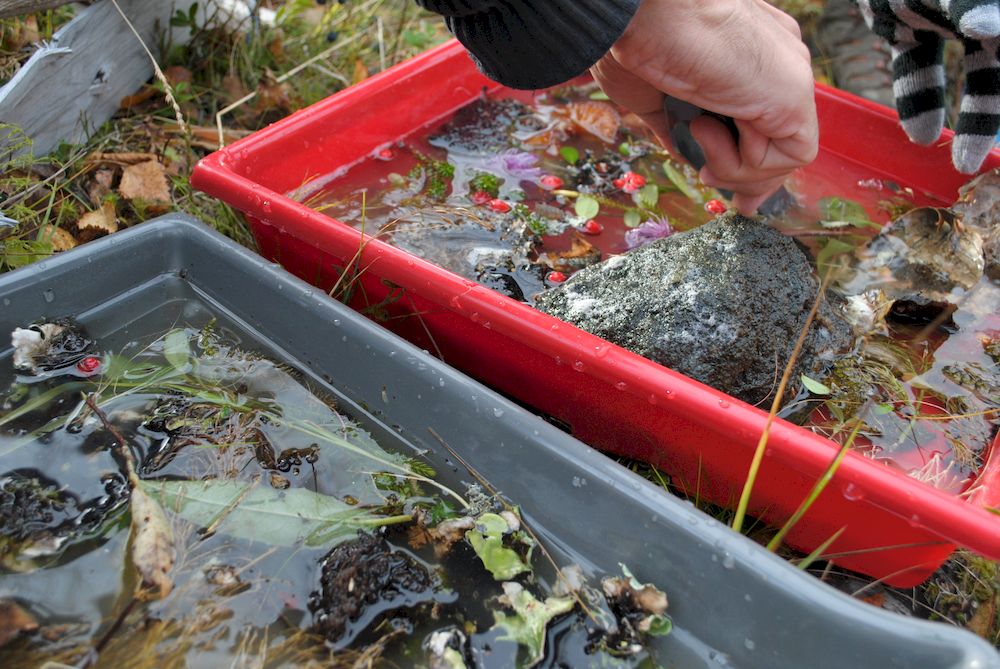
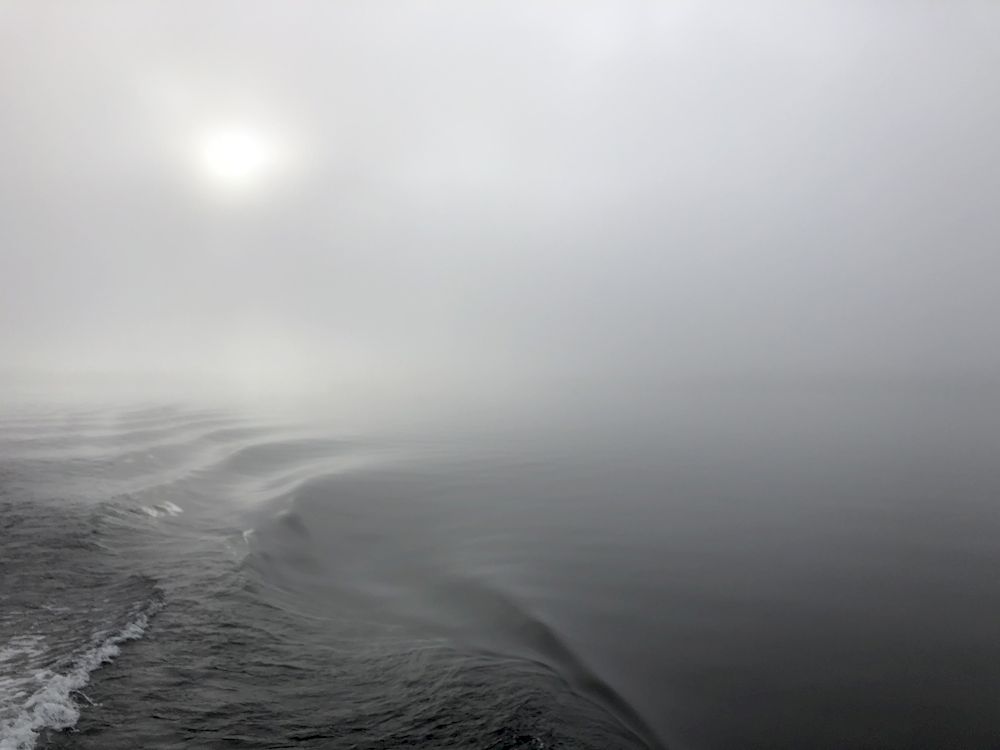
Second Order
The Second Order group set off to learn from the newly developing cultures in other groups, with writing as a shared practice. What does it mean to observe art? What senses can be brought to bear when we experience the early-stage process of art-making? What does fieldwork mean for theorists, philosophers, scholars, and art practitioners?
The group had a different working model from the others. It was composed of philosophers, theorists and other suitable practitioners embedded into the other groups with the aim of researching and intervening in order to offer counter-perspectives. The aim was to critically look at the methods and practices of the field, which included encouragement to violate traditional field norms in order to experiment with new possibilities. Led by art&science critic Hannah Star Rogers, the group also challenged itself to consider creative writing as a method.
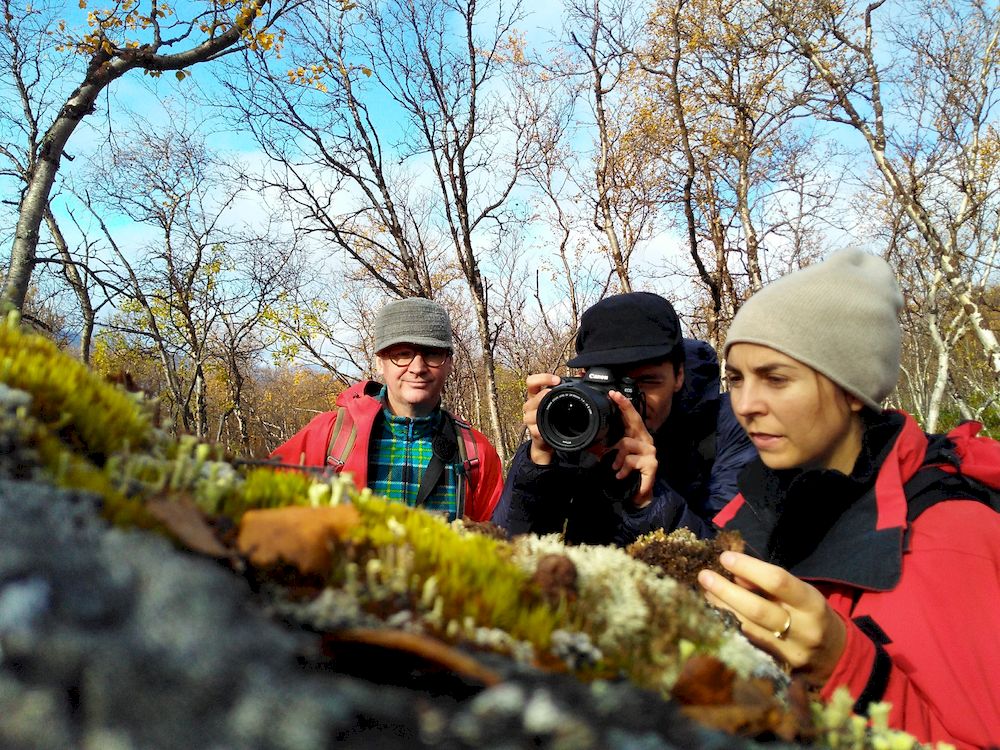
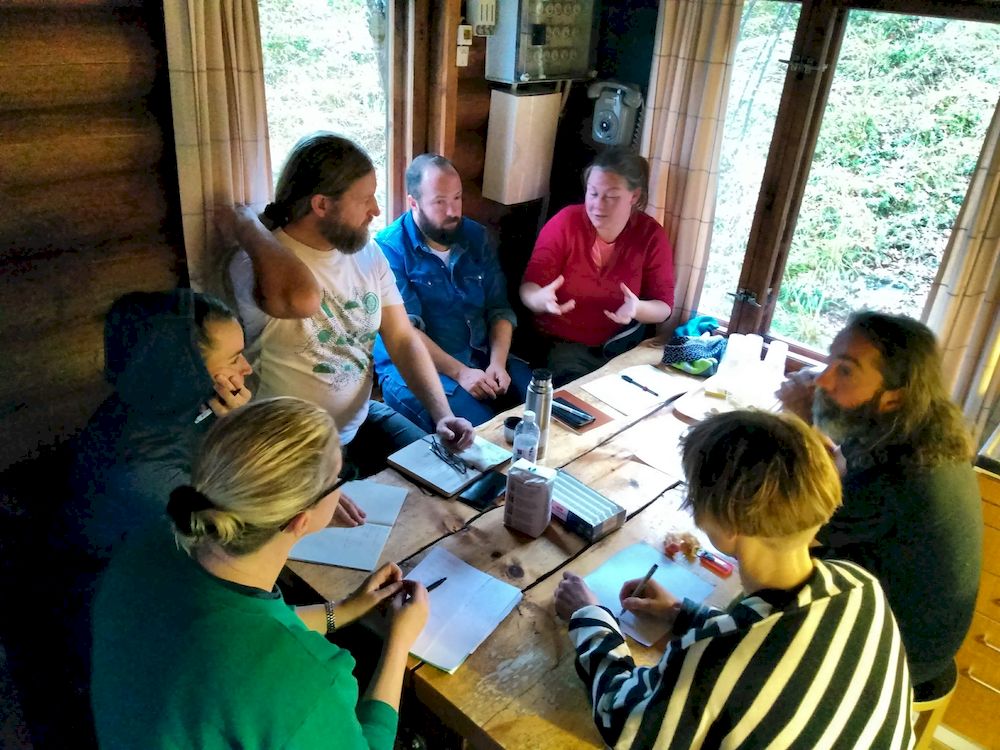
More information on Field Notes 2018
Field Notes is part of the Feral Lab network 2018-2020, a European network of summer camps. Makery will cover the activities of members (and others) through 2020, as well as host its own summer camp in France in 2019. Feral Lab members are: Projekt Atol (Slovenia), Schmiede Hallein (Austria), Helsingor Kommune (Denmark), Bioart Society (Finland), Radiona (Croatia) and Makery (France). Feral Lab is supported by the European Commission’s Creative Europe program.
